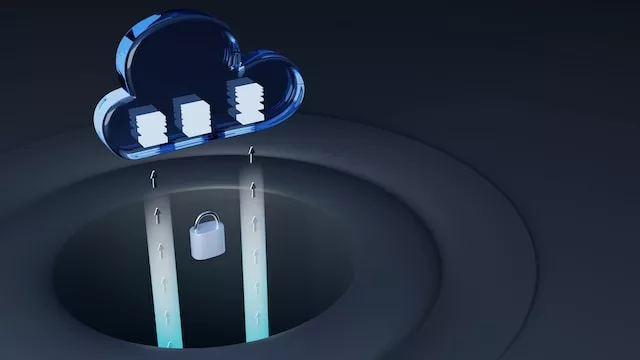Edge cloud is a potentially transformative solution for cloud service providers (CSPs). It has emerged as a game-changer in today’s computing landscape which is characterised by an ever-increasing demand for low-latency, high-bandwidth applications. However, as with any new and promising technological breakthrough, there are always detractors and stubborn myths that cause many to overlook it.
Below, we’ll dispel some of the misconceptions surrounding edge cloud and provide you with the facts regarding what it’s capable of and how it can benefit CSPs. See why it’s a $44.7 billion industry and why your business should be at the forefront of this rapidly growing industry.
Myths regarding edge cloud – Fact checked

To overcome resistance to adopting edge cloud solutions, you first need to be aware of what misconceptions you might be hanging on to and what the facts are. This will allow you to approach edge computing with an open mind and see the possibilities it has to offer:
Myth: Edge cloud is merely a buzzword.
Fact: Edge cloud is a tangible technology actively employed by diverse businesses and organisations.
Myth: Edge cloud exclusively caters to IoT applications.
Fact: Edge cloud has applications across various domains, including IoT, video streaming, gaming, and autonomous vehicles.
Myth: Edge cloud is costlier than traditional cloud computing.
Fact: The cost of edge cloud varies based on factors such as application size, complexity, edge-to-cloud distance, and bandwidth needs. It can be less expensive than traditional cloud computing.
Myth: Edge cloud requires significant infrastructure investment.
Fact: While it may require initial infrastructure investment, CSPs can leverage existing network infrastructure and gradually expand their edge capabilities based on demand and business needs.
Myth: Edge cloud offers superior security.
Fact: Edge cloud security hinges on elements like edge node location, network security, and application security. It can be more or less secure than traditional cloud computing.
Myth: Edge cloud is a one-size-fits-all solution.
Fact: Edge cloud does not possess a universal solution. The optimal approach varies based on situational requirements.
Myth: Edge cloud is incompatible with existing cloud infrastructure.
Fact: Edge cloud can be seamlessly integrated with existing cloud infrastructure, creating a hybrid cloud environment. This enables CSPs to leverage the benefits of both centralised cloud and edge computing.
Myth: Edge cloud is only suitable for large CSPs.
Fact: Edge cloud is beneficial for CSPs of all sizes. Small and mid-sized CSPs can take advantage of edge cloud to improve performance, reduce latency, and offer competitive services without the need for extensive infrastructure.
Myth: Edge cloud lacks scalability.
Fact: Edge cloud solutions can be designed to scale horizontally by adding more edge nodes or vertically by upgrading existing infrastructure. This flexibility allows CSPs to accommodate varying workloads and scale their edge computing resources accordingly.
Why businesses are switching to edge cloud (and why you should, too)

In a nutshell, edge cloud helps CSPs better adapt to the constantly growing and evolving needs for networking capabilities:
- Improved performance: Because data travels less far between a central hub and edge nodes, it reduces latency (by 45-80%) for real-time processing in applications like video streaming and gaming.
- Increased security: Handling information at the edge means minimal data transmission over the network, making it harder for attackers to intercept and steal data.
- Increased flexibility: Deploying applications closer to end users allows for accommodating diverse geographical requirements, such as deploying in rural or remote areas.
- Reduced costs: Savings on long-distance data transmission expenses, especially for CSPs serving remote or rural customers. It also scales better than the public internet, providing additional savings as the network grows.
Edge cloud solutions can make applications that would previously have been prohibitively resource-intensive feasible, thanks to their flexible and efficient architecture. Some of these applications include:
- Bandwidth-intensive application support: Meeting the growing demand for video streaming and gaming applications.
- Real-time processing for innovative applications: Enabling autonomous vehicles, augmented reality, and other real-time processing applications.
- Enhanced customer experience: More responsive and reliable network, improving overall satisfaction.
- Risk reduction: Minimizing the possibility of network outages and disruptions.
- Support for sensitive applications: It can provide for the highly dynamic needs of collaboration tools, productivity suites, and virtual desktops.
Challenges and concerns regarding the implementation of edge cloud solutions

CSPs should carefully assess their unique challenges and concerns while planning their edge cloud implementation. Through strategic planning, collaboration with experts, and thorough risk management, CSPs can mitigate these potential obstacles and maximise the benefits:
- Cost: The investment required for deploying and maintaining edge nodes, infrastructure, and network connectivity can be substantial, particularly for smaller CSPs with limited resources.
- Complexity: Deploying and managing edge cloud infrastructure demands expertise in configuring and optimising edge nodes, orchestrating distributed computing, and ensuring seamless integration with existing systems.
- Security: With edge nodes located closer to end users or devices, they may become more vulnerable to security attacks. Robust security measures, including encryption, authentication, and access controls, become critical to protect sensitive data.
- Regulations and compliance: CSPs must navigate potential legal and regulatory complexities to ensure adherence to local laws and protect user privacy. The location of edge nodes can influence compliance requirements and data governance practices.
- Customization and Variability: Each application and use case may have distinct requirements, making it challenging to develop standardised solutions. CSPs must be prepared to adapt and tailor their deployments to specific scenarios.
- Technology Maturity: Edge cloud is still an evolving technology. Adopters might encounter a lack of standardised frameworks, interoperability, and limited availability of edge nodes that pose operational constraints and limitations.
Conclusion
It’s clear that edge cloud is not just a passing trend but a transformative technology that can revolutionise the way CSPs deliver services. By debunking the myths and understanding the facts surrounding edge cloud, CSPs can make informed decisions about embracing this solution and capitalising on the abundant benefits.
While challenges remain, most can be overcome through careful planning and by addressing the myths and misconceptions that cause many to miss out on this transformative evolution in networking resources.







